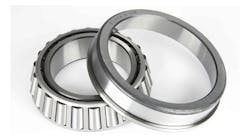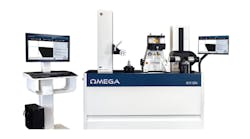A few years ago, we were at a crossroads with a customer. That manufacturing business has an application for which we recoated machine rolls regularly, for years. As part of planned maintenance every six months, the customer removed the roll and shipped it to us. We coated it and shipped it back. With round-trip shipping costs at $600, and approximately $5,000 for reconditioning, coating, finishing and dynamic balancing of the roll, the cost was about $5,600 each time. We encouraged the customer to let us examine the coating to save them money and downtime.
By way of background, my company is a manufacturing and rebuilding operation that handles industrial coating, precision machining, and hard-face welding. Like many of the people in our industry, we also sell our expertise and problem-solving ability.
With our knowledge of that customer’s application, and the science of powder manufacturing, we turned to our on-site metallurgical lab to come up with a longer-lasting solution. Through a process of trial and error, we eventually came up with a coating that would last six years between applications. The price was about $9,000, and when we told our customer contact – who was an engineer – about the breakthrough, he was very happy. When his purchasing department noted the uptick in cost, the purchasing manager complained to the engineer.
“When there’s a disconnect with purchasing, the seller of a service may want to help its customer – the specifying engineer – communicate with the purchasing manager,” added LeRoy Graw, president of the International Purchasing and Supply Chain Management Institute. “The message for purchasers is this: Best value, includes price as well as service, delivery and quality.”
There is a list of things machine shop owners can point to when discussing a project with a purchasing manager. Experts in the field of purchasing suggest that machine shop owners do two things: First, explain how their company and process delivers the best value, not price; and second, introduce themselves to the purchasing department and learn about their process and metrics.
“Machine shop owners could even take a purchasing class and learn how purchasing managers are being taught to ‘buy value,’” said Graw.
A well-qualified purchasing professional doesn’t base buying decisions on price alone,” according Harry E. Hough, Ph.D., CPP, CPPM, president of the American Purchasing Society Inc. “He or she considers total, long-term costs.”
According to Hough, long-term costs include:
• The quality needed or the specifications that are provided by engineering;
• The reputation and stability of the supplier; and,
• The record of on-time delivery that matches the buying company’s requirements.
And what if a machine shop is dealing with a purchasing agent who isn’t well qualified? Graw said the shop could work with the customer’s engineering team to outline the project in a way that honors the customer’s policies and procedures, but makes clear that only one shop is best suited to fill the requirement.
Making a case for value — To avoid being thought of as a commodity, try elevating conversations about purchasing (tactical) to supply management (strategic.) For example, when interacting with your customer’s purchasing team, ask:
• Does the business have other units or divisions that require the same services, so you can create an economy of scale?
• Is it paying separately for raw materials from other sources that you could provide?
• Is it currently making products that could be bought from you instead?
• Is it relying solely on long-term contracts, and is it open to an annual agreement that includes a rollover option for work done well?
• Does it have key suppliers experiencing chronic overcapacity? If so, find out what these suppliers provide that you might supply.
• Do they know how you can get involved with their design process, to help them ensure better quality or even lower the cost of materials?
Another strategy for showing value is with a facility tour. Whether you’re a new vendor trying to win business or an established vendor trying to expand sales, a facility tour can kickstart relationships with engineers and purchasing managers. On a tour, customers meet the people responsible for managing projects and the skilled workers carrying out tasks. Even a customer considering a facility for a small order is someone to invest time with. Purchasing experts say the investment in leading a well-planned tour builds a case for value over price alone.
“A facility tour doesn’t have to be done only when trying to win a new customer,” Graw added.
The tour can showcase how you shepherd a project from receipt to delivery. If you have purchased new equipment or expanded your facility, a tour shows purchasing managers how your investments will create value for them in terms of longer-lasting components and less downtime for the customer.
To prepare for a new tour or refresh one you’ve been giving for years, write a script and rehearse. Create an outline of stops and even draft some talking points you might use, such as anecdotes about challenging projects or tough problem-solving, or meeting a deadline creatively. Once you’re comfortable with a script, practice it with a co-worker as you walk the facility floor. Your co-worker can play the role of a customer. If you know you charge a premium for your facility’s services versus your competition, then during your tour show the quality of your equipment, skilled workforce, and ability to, for example, source materials or properly apply alloys.
Some machine shop owners take a tactical approach to their business. In other words, they’re seeing the project largely, if not entirely, from their perspective but failing to imagine how a job might be made simpler for the customer. For example, if you have a customer who will supply you with the raw materials for a job, then by all means, gladly take the offer.
But you can make things more convenient for the customer if you offer to source and purchase raw materials. If you’re willing to supply materials and even other auxiliary parts like bearings, it’s just one more way you can avoid commoditizing yourself. Ultimately, this type of approach communicates to purchasing agents that you’re about more than just machining things.
Matthew Watson is vice president of operations for HFW Industries, a Buffalo, N.Y.-based job manufacturer and rebuilder of industrial equipment.






